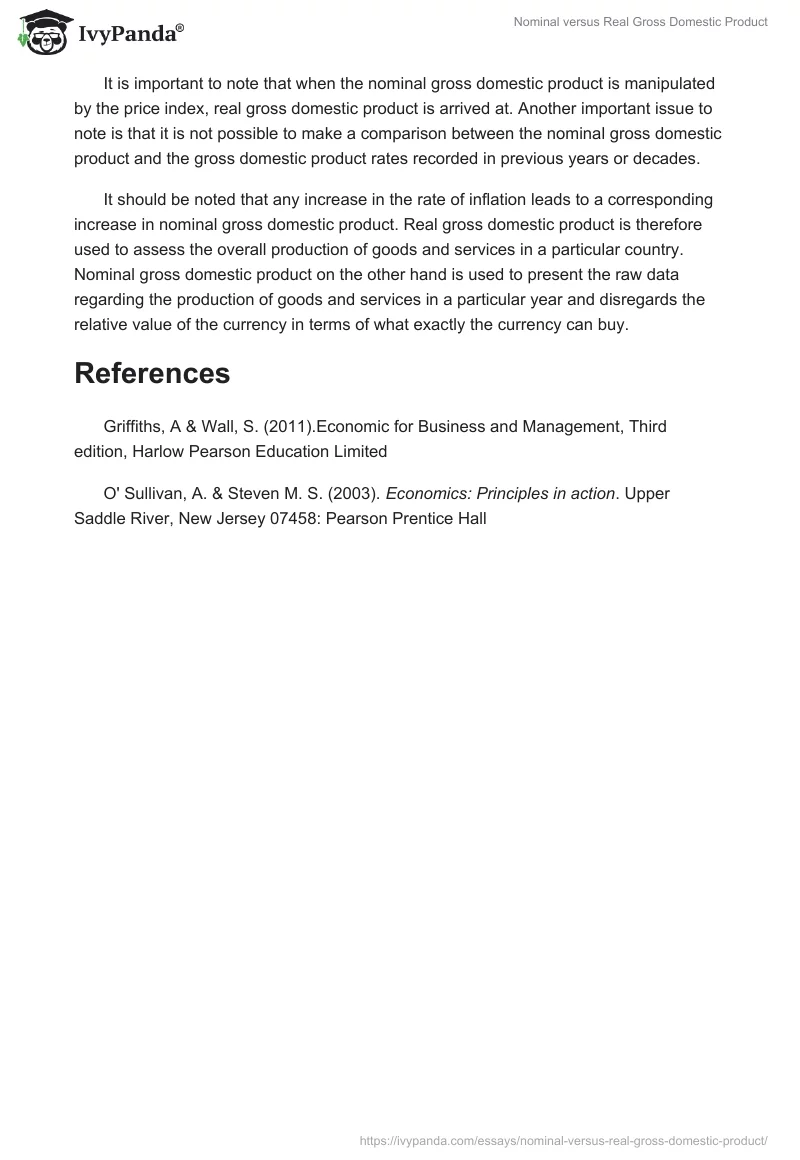The Gross Domestic Product (GDP) can be defined as the value of all goods and services that a country can produce in a period of one year. Nominal gross domestic product is basically the use of current prices to value the goods and services of country in a specific year. Real gross domestic product just like nominal GDP, is the valuation of a country’s output in terms of the goods and services produced by the citizens in a particular year (Griffiths & Wall, 2011).
The only difference is that, this measure utilises the prices of a particular past year normally referred to as the base year. It should be noted that the main difference between real gross domestic product and nominal domestic product is that when calculating real GDP, the prices of goods and services are adjusted for inflation while in the calculation of nominal GDP, this is not done.
According to Griffiths & Wall (2011) “Real gross domestic product is basically the use of current prices to measure the value of the goods and services that a specific country produces in a particular year while the nominal gross domestic product uses current market prices to measure the value of the same goods and services”. It is important to note that economists consider real GDP as the better measure between the two.
Another definition that has been used to differentiate between the two is the definition of nominal GDP as a country’s national output. A country’s national output has been defined by various economists as the product of the price and quantity of the goods and services that its citizens produce in a particular year. In order to arrive at the Real GDP, the nominal GDP is normally divided by the rate of inflation in the country.
Inflation has been defined as “the general increase in the prices of goods and services” (O’ Sullivan & Steven). It is important to note that the reason why the value is adjusted for inflation is due to the fact that in case of a price increase in a subsequent year, nominal GDP would not give the true value if the adjustment is not made as it would be larger than it should actually be.
It is important to note that when the nominal gross domestic product is manipulated by the price index, real gross domestic product is arrived at. Another important issue to note is that it is not possible to make a comparison between the nominal gross domestic product and the gross domestic product rates recorded in previous years or decades.
It should be noted that any increase in the rate of inflation leads to a corresponding increase in nominal gross domestic product. Real gross domestic product is therefore used to assess the overall production of goods and services in a particular country. Nominal gross domestic product on the other hand is used to present the raw data regarding the production of goods and services in a particular year and disregards the relative value of the currency in terms of what exactly the currency can buy.
References
Griffiths, A & Wall, S. (2011).Economic for Business and Management, Third edition, Harlow Pearson Education Limited
O’ Sullivan, A. & Steven M. S. (2003). Economics: Principles in action. Upper Saddle River, New Jersey 07458: Pearson Prentice Hall


